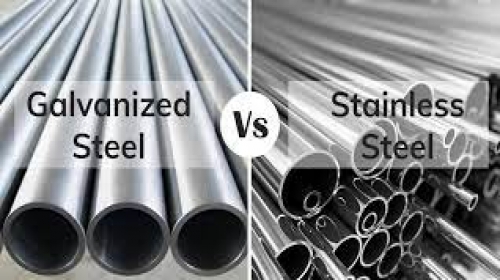Difference between galvanized steel and stainless steel

Both galvanized steel and stainless steel (i.e. stainless steel) are prized for their ability to resist rust. However, these two types of materials have many differences. Even their rust resistance is not the same.

Below is a table comparing some characteristics of galvanized steel and stainless steel:
|
|
Galvanized steel |
Stainless steel (inox) |
|
Structural ingredients |
Coated with a layer of zinc on the surface |
An alloy of iron, containing a minimum of 10.5% Chromium and 1.2% Carbon. |
|
Anti-rust ability |
The rust resistance in galvanized steel is due to the zinc layer. They can resist rust well but to a certain limit. At some point, when the zinc layer has been completely eroded, the steel can still rust. |
Stainless steel's anti-rust ability is due to the components it contains such as Chromium, sulfur, nickel, Molybdenum, etc. Stainless steel has superior anti-rust ability than galvanized steel whether it exists in normal or conditioned environments. unfavorable circumstances. |
|
Longevity |
On average over 20 years under favorable environmental conditions and under 10 years if used in flooded or coastal areas. |
More longer than galvanized steel. |
|
Price |
Medium |
High |
|
Application |
In water or humid conditions. |
Fields requiring excellent corrosion resistance, high budget projects. |
.png)



Write a comment